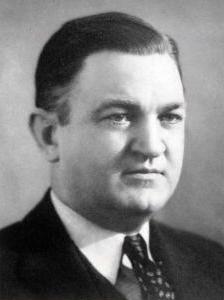
Carl Edward Bailey was the 31st governor of Arkansas from 1937 to 1941.

Xenophon Overton Pindall was a member of the Arkansas House of Representatives, Arkansas State Senate and acting governor of the U.S. state of Arkansas.

Harris Flanagin was an American politician and lawyer who served as the 7th governor of Arkansas from 1862 to 1864, and in exile from 1864 to 1865. Prior to this he was a Confederate States Army officer who commanded infantry in the Western Theater of the American Civil War.

The Carlock Building, 1001 – 1013 13th Street, Lubbock, Texas, is an office building designed in the Art Deco style by J. B. Davies & Company of Fort Worth, Texas. It was constructed in 1930 as a cotton exchange for J. D. Doughty and J. B. Kerby. The building reflected the importance of cotton in the region and the growth of peripheral industries.

The Confederate State Capitol building in Washington, Arkansas was the capital of the Confederate state government of Arkansas, during 1863–1865, after Little Rock, Arkansas fell to Union forces in the American Civil War. It is located within Historic Washington State Park, and is a National Historic Landmark.
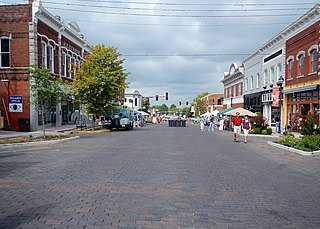
The Rogers Commercial Historic District, known informally as Historic Downtown Rogers, is a historic district in the central business district of Rogers, Arkansas. When it was first listed on the National Register of Historic Places in 1988, it was known as the Walnut Street Historic District; this was changed when the district was enlarged in 1993. The district encompasses a portion of the city's central business district, whose historical significance extends from about 1885 to the end of World War II.

The Jefferson County Jail is a historic structure in central Louisville, Kentucky, United States. Built in 1905 in the Chicago style of architecture, it was designed by D.X. Murphy & Bros. It comprises two wings: the western, built as cell blocks, and the eastern, which originally housed offices. A system of corridors was used to separate male and female prisoners and black and white prisoners.
The University of Arkansas Campus Historic District is a historic district that was listed on the National Register of Historic Places on September 23, 2009. The district covers the historic core of the University of Arkansas campus, including 25 buildings.

The United States Post Office and Courthouse, also known as Texarkana U.S. Post Office and Federal Building and as Texarkana U.S. Post Office and Courthouse, is located on State Line Avenue in Texarkana, straddling the border between Arkansas and Texas. It is a courthouse of the United States District Court for the Western District of Arkansas and the United States District Court for the Eastern District of Texas.

The Baxter County Courthouse is a courthouse in Mountain Home, Arkansas, United States, the county seat of Baxter County, built in 1941. It was listed on the National Register of Historic Places in 1995. The building replaced another courthouse on the same site which was deemed unsafe in 1939.

Bradley County Courthouse is a courthouse in Warren, Arkansas, United States, the county seat of Bradley County, built in 1903. It was listed on the National Register of Historic Places in 1976. The courthouse was built using two colors of brick and features a 2½ story clock tower.
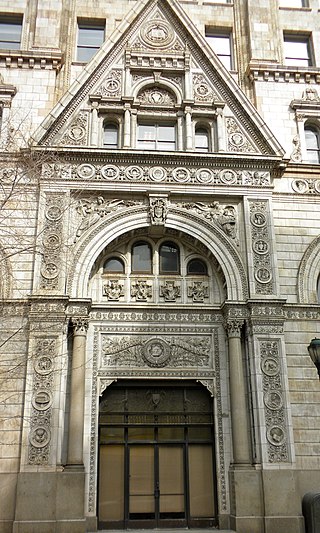
Witherspoon Building is a historic office building located in the Market East neighborhood of Philadelphia, Pennsylvania. It was designed by architect Joseph M. Huston (1866–1940) and built between 1895 and 1897. It was built for the Presbyterian Board of Publications and Sabbath School Work. It is an 11-story, steel frame "E"-shaped building, faced with brick and granite. It has terra cotta decorative elements. Its exterior features Corinthian order and Ionic order columns, statues, medallions, seals of various boards and agencies of the Presbyterian Church and of related Reformed churches. It is named for John Witherspoon (1723–1794), a president of Princeton University.

The M. E. Blanton House is a two-and-a-half-story Craftsman style historic building in the community of Aloha in the U.S. state of Oregon. Built in 1912, it is situated along Southwest 170th Avenue less than a block south of Tualatin Valley Highway. The interior of the 3,000-square-foot (280 m2) house is of the Arts and Crafts style. It was added to the National Register of Historic Places in 1989 and is used as a law office.

The Cross and Nelson Hall Historic District encompasses two historic buildings on the campus of Southern Arkansas University in Magnolia, Arkansas. Cross Hall and Nelson Hall were both built in 1936 by the Public Works Administration (PWA) as dormitories for boys and girls, respectively. They are two-story L-shaped brick buildings with Colonial Revival and Collegiate Gothic stylistic elements. Cross Hall has since been converted into classrooms and professors' offices; Nelson Hall now houses student services and the admissions office.

Rose Hill Cemetery is the second oldest cemetery in Arkadelphia, Arkansas. The cemetery, whose entrance is located on the 1200 block of Main Street, is 12 acres (4.9 ha) in size, with more than 2,000 burials.

The U.S. Post Office-Stuttgart is a historic post office building at 302 South Maple Street in Stuttgart, Arkansas. Built in 1931, this single-story Colonial Revival brick and limestone structure was the first purpose-built post office building in the city. A 1966 addition sensitively matched the existing building materials. The building was used by the U.S. Postal Service until 2002, and was purchased by the city, which converted it for use as city offices.
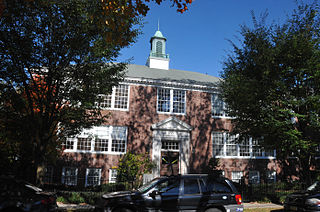
The Witherspoon Street School for Colored Children educated the African-American children of Princeton, New Jersey from 1858 until the Princeton Public Schools were integrated in 1948. The school was originally located at the building still standing at 184 Witherspoon Street. As enrollment increased it moved, in 1909, to 35 Quarry Street, the building which bears the National Register of Historic Places designation. The Quarry Street building was expanded in 1939 and again in 1966, giving it its present appearance. The former school has since been turned into an apartment building.
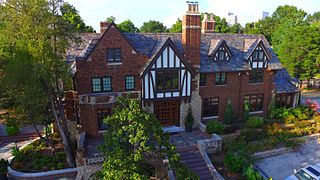
The McBirney Mansion in Tulsa, Oklahoma was the home of James H. McBirney, co-founder of the Bank of Commerce in Tulsa in 1904. He was the original owner of the mansion, built by architect John Long in 1928, and lived there until 1976. The mansion contained 15,900 square feet (1,480 m2) and sits on a 2.91 acres (11,800 m2) lot. The mansion was bought by Donna and Roger Hardesty who lived there for 5 years. Eventually it was bought by a law firm that turned it into a law office. By 2007, was purchased by former American Airlines President George Warde, who had plans to transform it into a boutique hotel. In the meantime, the McBirney Mansion was used as an event center. Warde died in 2012, and events stopped being held at McBirney. By February 2012, the Pauls Corporation, a Denver real estate management company, acquired the mansion as part of the suit's settlement. Tulsa attorney, Gentner Drummond, bought the mansion from Pauls Corp. in 2014, announcing his intention to make it his family's home.



















